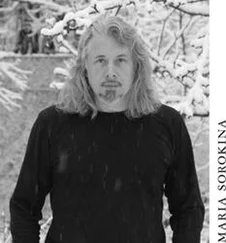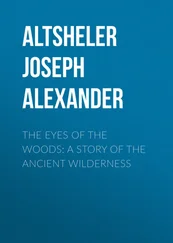People say humanity will find other sources of energy, but the fact remains that by far the greater part of our needs is supplied today, as in the distant past, by burning the forest: no longer the forest around us, because that was all burned long ago, but faraway forests. Faraway not in terms of space, because those forests, too, have been felled, but from far back in time, from the millions of years before humanity appeared and after it appeared. At that time the forest was still close to human beings, not only in the sense that they lived in it, but also in the fact that they were themselves covered with abundant growth, a forest of hair. The forest encroached so intimately upon them that it comprised their very skin, their very bodies. There was far less need then to burn the forest because human beings were kept warm by this fur which covered and was part of their body. Was this the only way they were related to the forest?
A close relationship with the forest seems to continue among the so-called primitive tribes who live there now and whose abhorrence of tree felling is so deeply ingrained that, even when their communal ways are taken from them, for example when they are brought into civilized society, they never become loggers, will not work with chainsaws, on trailing tractors and the like. Violation of the forest is tantamount, as far as they are concerned, to violation of their own body, although no surviving furry human beings are known to science today. The hairy yeti still stalks our minds and inhabits folklore, close to modern humans. The yeti has no place near the fire either, but his is a different kind of distance from that of the unfortunates who would be glad of a place.
Just as modern humans are almost devoid of hair, so the earth today is losing its forests. More important, though, than the visible forests for fuelling the fire humans cluster round are those invisible forests from half a billion years ago now so tangibly present in the form of coveted coal and oil. Is there not, however, another way in which the forest is even more germane to how we exist today? There is indeed, and when we recognize that, several doors immediately open. For now, we shall only peep through them while deciding which one to enter. We are in a hall of mirrors.
Let us consider a burning wood fire. In his latest, as yet unpublished, work, Andrey Lebedev examines the etymology of hyle, the word for ‘wood’, ‘forest’, in ancient Greek and concludes that fire and conflagration are inherent in it; the etymology suggests flammability and burning. 3Since the point is still under debate, let us leave it for now and pursue a different avenue of inquiry.
Besides today’s forests, which are all but exhausted, and the ancient forests, which are half-exhausted, one of the most significant sources of energy must surely be nuclear energy. Atomic energy can also be seen as a product of combustion, but of what? Even highly specialized knowledge will take us only so far here because of issues science has yet to resolve. We can, and commonly do, represent an atomic reaction as a kind of burning, an explosion, a fast-developing fire or a process of slow decay. But a burning of what? In autogenous welding, the elements of hydrogen and oxygen combust, combine, become a molecule of a different compound, water, cease to exist autonomously but remain unchanged as water. A thermonuclear reaction, too, involves elements – uranium, plutonium, hydrogen – but something transformative is done to the elements themselves. We are talking about changes not to elements but to matter itself: the transformation of matter into energy. That is, what is ‘burning’ is not wood, petroleum, or coal, not compounds of elements. In a thermonuclear reaction, what is burning is matter itself.
How curious that the original meaning of the word for ‘matter’ in ancient Greek philosophy is wood, forest. The word ‘materia’ is Latin and its original meaning is primal matter. In Cicero, it is the matter of the world, of which everything consists and in which everything exists: materia rerum ex qua et in qua sunt omnia. This Latin philosophical term is a translation of that Greek philosophical term, ὕλη, hyle, whose primary meaning is ‘wood’. It is entirely possible that the official, technical meaning of materia in Latin, then meaning ‘matter’ as it now does in Russian and English, only became primary within official culture, while in popular culture the main meaning continued to be combustible material and, more specifically, wood in the sense of fuel, firewood. That is, before it was squeezed out there, too, by the philosophical usage. In Latin, felling timber is materiam caedere. In one of the Romance languages, this expression became madeira, whose primary meaning is simply forests.
In atomic energy, then, in a thermonuclear reaction, if we want to avoid a lot of specialist terminology, we can say more or less accurately that what is being burned is actually wood.
Unexpectedly, our own philosophical language is telling us that what is burned in the promising new thermonuclear energy reactions is the matter of the world: ‘wood’. In the light of this discovery, we shall exercise caution before deciding that hyle, meaning ‘an area of land covered with trees’ or ‘timber’, should take precedence over the classical philosophical meaning of ‘matter’. Language in general does not arise from adding sememes together; its origins are as deep as dreaming. In the word ‘wood’ it refers to trees, to fuel, and to the matter of the world. Let us not, therefore, be in too much of a hurry to decide which meanings are original and which are derivative. May not the use of materia in philosophy as well be, not a departure from the original meaning of ‘wood’, but a return to it? For now it seems that, as soon as we get into the forest, we lose our way.
Let us approach the forest from a different angle. This other aspect has long been present and all we need to do is look at it attentively. There is nothing new about comparing the world to a living being. No European figure has articulated such comparisons more comprehensively and clearly than Leonardo da Vinci, whom we will need to study closely. In this simile, the forests of the earth would correspond to the hair or fur on the body of a living creature. Here is one context:
… potrem dire, la terra avere anima vegetativa e che la sua carne sia la terra; li sua ossi sieno li ordini delle collegazioni di sassi, di che si compongono le montagni … il suo sangui sono le vene dilli acque; il lago del sangui, che sta di torno al core, è il mare oceano: il suo alitare è il crescere e decrescere del sangue … e il caldo dell’ anima del mondo è il foco, ch’è infuso per la terra …
So then we may say that the earth has a spirit of growth, and that its flesh is the soil; its bones are the successive strata of the rocks which form the mountains; its cartilage is the tufa stone; its blood the veins of its waters. The lake of the blood that lies around the heart is the ocean. Its breathing is by the increase and decrease of the blood in its pulses … and the vital heat of the world is fire which is spread throughout the earth … 4
The human body nowadays is not completely covered with hair. I cautiously say ‘nowadays’ in order not to be drawn into the debate over whether early human beings were or were not covered with hair. For the theory of evolution, the issue is not crucial because there are other hairless animals – elephants, for example. What is phenomenologically important for us is to note that in our minds, our myths, and our fiction, the bigfoot, the furry anthropoid, the child born covered with hair, caesariatus, recur regularly and are evidently dear to us. We are intrigued by the idea that human beings can be hairy. It makes them either frightening, like the Leshiy, the Russian wood demon, or auspicious, as suggested by caesariatus in Latin, covered with hair, having long hair.
Читать дальше












